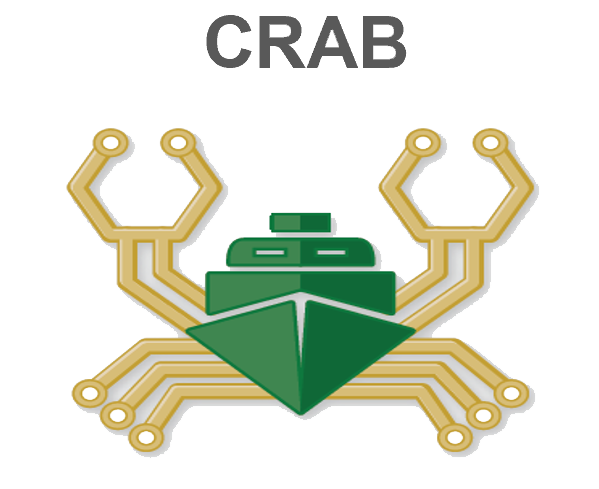Cybersecurity Risk Assessment Box
Acronym: C.R.A.B
Summary:
Digitalisation is happening everywhere around us, however it increases cyber-attack risks. The proposed Cybersecurity Risk Assessment Box (CRAB) will identify types of cyber risks for shipping and provide data to everyone involved in maritime transportation. The UK is an Island nation with 95% of our international trade and 15% of domestic trade transported by sea, therefore secure maritime operations are of paramount importance. We believe that maritime cyber threats are, as for most systems, a combination of human factors and technology, therefore, we wanted to develop a system that would allow vessel owners to assess the level of cyber security risk, resulting from behaviours of staff, their IT systems and potential attacks. Currently, there is no method to provide a real-time risk assessment of cyber threats on-board vessels. With the application of the CRAB, both shipping (through lower insurance premiums) and UK society (through improved security of maritime operations) will benefit as they will be better prepared for the digital era, driven by the 4.0 Industrial revolution.
DIGital FORensics: evidence Analysis via intelligent Systems and Practices
Acronym: DigForASP
Summary
Digital Forensics (DF) is a part of Criminalistics Sciences which deals with digital evidence recovery and exploitation in the solution of criminal cases through the application of scientific principles. There are several, increasingly sophisticated methods for collecting digital evidence. Rough evidence must however be used to elicit hypotheses concerning events, actions and facts (or sequences of them) with the goal to obtain evidence to present in court. Evidence Analysis (EA) involves examining fragmented incomplete knowledge, and reconstructing and aggregating complex scenarios involving time, uncertainty, causality, and alternative possibilities. No established methodology exists today for digital EA; the Scientific Investigation crime experts usually proceed on the basis of their experience and intuition.
The Challenge of the proposed Action consists in creating a Network for exploring the potential of the application of Artificial Intelligence (AI) and Automated Reasoning (AR) techniques in the DF field, and creating synergies between these fields. Specifically, the challenge is to address the EA phase, where evidence about possible crimes and crime perpetrators collected from various electronic devices must be exploited so as to reconstruct possible events, event sequences and scenarios related to a crime. EA results are then made available to law enforcement, investigators, public prosecutors, lawyers and judges: it is therefore crucial that the adopted techniques guarantee reliability and verifiability, and that their result can be explained to the human actors. The Action will be composed of high-quality researchers in AI and AR and of experts in DF and Digital Investigations, belonging to Government Institutions.
Secure wireless nonlinear communications at the PHY layer
Acronym: SWINCOM
Summary
The project aimed at advancing the state-of-the-art in wireless communication systems by tackling the problems of security, reliability, power consumption, and spectral efficiency. Novel methods, algorithms, and tools were developed considering the above problems in a combined manner and providing a unified and cohesive view in the analysis and design of the next generation wireless systems. Cryptographic schemes leading to constructions able to thwart sophisticated cryptanalytic attacks comprised an important part of the project, which was coordinated by Summit-Tec members. Designs that combine enhanced security (under formal notions of security) and low complexity were developed that are particularly suited for lightweight devices.
Heterogeneous ad-hoc networks for distributed, cooperative, and adaptive multimedia signal processing
Acronym: HANDICAMS
Summary:
The project aimed at developing a new ICT paradigm, which considers multiple heterogeneous devices that share information in order to simultaneously perform multiple tasks (c.f. a single task which is the current paradigm) in a cooperative and secure way. The focus was on lightweight IoT devices, e.g. microphones, handheld cameras, active headsets, hearing aids, smartphones, tablets, equipped with multiple sensors and communicate over untrusted or adversarial wireless networks. At the core of the project was the development of security mechanisms, leaded by Summit-Tec members, for thwarting cyber-attacks from malicious devices and preventing information tampering during communication. Amongst others, a concrete outcome of the project was the development of a novel game-theoretic framework for security that allows the devices to establish trust relationships and to identify other ill-behaved or possibly malicious devices.





